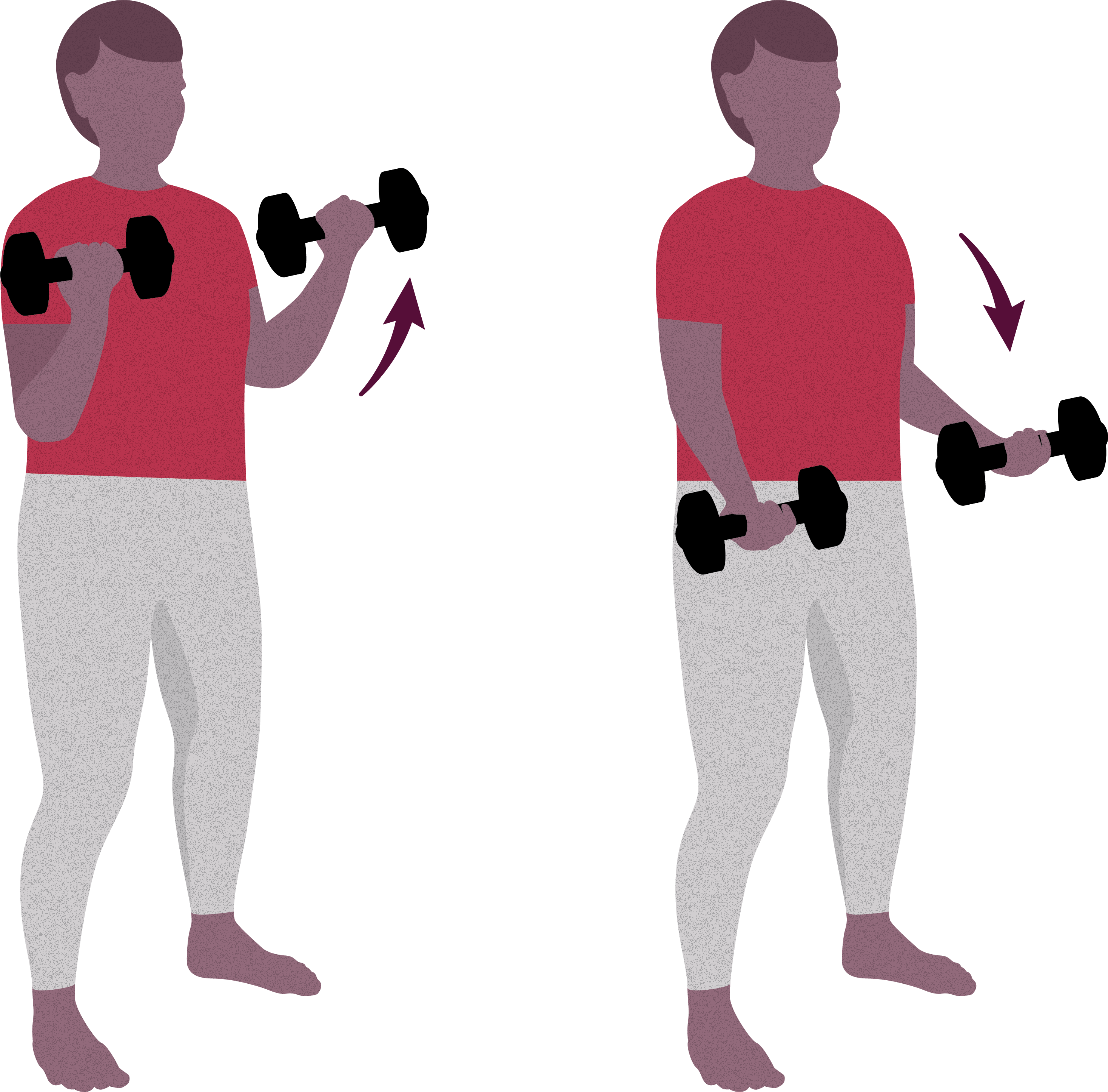What is PR?
Pulmonary rehabilitation (PR) is a treatment programme made up of:
- exercises classes designed for people with long-term lung conditions
- information about looking after your body and lungs
- advice on managing your lung condition
- techniques to manage breathlessness.
PR is designed for people living with a lung condition that makes them breathless. You will have a PR team of healthcare professionals such as physiotherapists, nurses, and occupational therapists.
A course of PR usually lasts six to eight weeks, with two sessions of about two hours each week. You’ll be in a group with other people too.
PR courses are usually held in local hospitals, community halls, leisure centres and health centres. Your healthcare professional will try to make sure the course is easy for you to get to. Some places also offer digital pulmonary rehabilitation.
Who should go to PR?
PR is aimed at people with a lung condition whose ability to be active is affected by breathing difficulties. It can benefit people with long-term lung conditions, including:
- chronic obstructive pulmonary disease (COPD)
- bronchiectasis
- pulmonary fibrosis
- severe asthma.
PR may not be suitable for you if:
- you’re too breathless to leave the house
- pain limits your walking
- you have uncontrolled heart problems
- you’ve had a recent heart attack.
Ask your GP or cardiologist about cardiac rehabilitation.
You can do PR if you use oxygen
Some people who need oxygen to help manage their condition may need a portable oxygen cylinder during the classes. If you’ve been told your oxygen levels drop when you exercise, portable oxygen may help you to stay active for longer.
How do you get PR?
Everyone should be referred for PR if they need it. Your GP, practice nurse, or respiratory team can refer you. Ask them if PR is right for you and what’s available in your area. You may be able to bring a family member or carer with you.
Some programmes will have waiting lists, so try and speak to your GP about it as soon as you can. If you’re told you’re not eligible for PR, you could try other ways of being active.
How will PR help you?
PR can:
- improve your muscle strength so you can use the oxygen you breathe more efficiently and become less breathless
- help you cope better with feeling out of breath
- improve your fitness so you feel more confident to do everyday tasks
- improve your mental wellbeing
- help you feel less tired
- reduce your risk of being admitted to hospital with a chest infection or flare-up
- help you understand and manage your condition better.
Completing a course of PR is a good way to learn how to exercise safely and at the right level for you. The course will build your confidence and help you to meet people in a similar situation to you.
What happens on a PR course?
A PR course will usually start with an assessment of your health and what you’re physically able to do. Your PR team will ask questions to understand you and your body, so they can help you get the best out of the course.
At each session, you’ll spend about half the time exercising. The exercises will be designed to provide the right level of activity for you. Getting out of breath is part of the therapy. Don’t worry though, you will be supported throughout the class and won’t be asked to do more than you can safely do.
Here are some examples of upper body, lower body and stretching exercises that you may do at a pulmonary rehabilitation (PR) class. These are taken from our Keep Active handbook:


For the rest of the time, you’ll learn about topics such as:
- why being active is so important for people with lung conditions
- ways to be more positive about being active
- how to use breathing techniques during physical activity
- how to use breathing techniques to manage anxiety
- how to manage low mood or low motivation to move
- how to use your inhalers and other medicines
- how to eat when you are breathless
- how to stop smoking (if you smoke)
- what to do when you’re unwell with a chest infection or flare-up.
Try to attend every session of PR if you can. The more you go, the more you will benefit from the course.
What happens after PR?
Staying active after you’ve completed your course, will help you keep up the progress you’ve made. You can carry on using the techniques you’ve learned.
Your PR team might refer you to a follow-up exercise programme – ask them if this is an option. Or try other ways to keep active.
If there’s no follow-up programme, or you don’t want to go to the gym, you can carry on at home by using our Keep Active videos or Keep Active handbook.

Get support
Call our Helpline for support with your condition. Get advice on your medicines, symptoms or travelling with a lung condition, or just call us to say hello.






